Independent learning is a quality we work hard to foster in our kids. Why? Well, there’s a number of reasons. But for a mom of…
…a brand new high schooler,
…an inquisitive 5th grader,
..a baby who needs lots of mama’s attention,
…and twins… two (count them, 2) little 7-year-olds who are still working on learning to read proficiently…
…fostering independent learning isn’t just something nice: it’s a must in our house! There’s only so many things we mamas can do at one time. AmIright?
But not only does raising independent learners help us as homeschool parents juggle all of the demands of homeschooling multiple kids, keeping up with the laundry, the clutter, the meals, and running the kids to all of their practices and activities—it’s a character trait that will serve them well the rest of their lives!
And this is precisely what directed us towards using the math curriculum Teaching Textbooks with our twins this year.
Special thanks to Teaching Textbooks for underwriting this post where I have the opportunity to share with you our personal experience with their math curriculum!
Why We Chose Teaching Textbooks for Our Twins…
Every year, with each of our kids we assess what’s working, what’s not, and how we can do better.
While our previous math curriculum was working and our boys were learning, it was a huge time suck. So we sought out different options that might help free up some parent time. This is what initially lead us to Teaching Textbooks, but we’ve found many reasons to love this curriculum!
1. Fostering independence in learning!
The primary way Teaching Textbooks fosters independence is by doing the teaching for you. And they do a bang up job, by engaging your kids senses on several levels.
The computer “teacher” speaks, has visuals on the screen, and also frequently asks students to engage by typing in answers to questions during the lecture.
I appreciate the emphasis on multiple modes of learning because we all learn best when we’re engaging multiple senses in the learning process.
2. A proven approach to learning.
In all my reading on research-based learning, I’ve become more convinced that a “spiral approach” to learning is best.
Mastery-based learning, where students spend time doing lots and lots of questions of the same kind and based on one concept before moving onto the next topic, is often enjoyed by students the most—that is, they feel like they are learning the best this way.
But just because you like something and you feel like you’re learning the best, doesn’t mean that’s actually happening.
The spiral approach, where students spend a little time on a new topic, and review lots of previous topics, often feels more difficult to students, but research has shown over and over that when you learn this way you retain the information better.
It may not feel to students like they are mastering the material because they are slowly spiraling through new and old topics, going a little deeper as they go. It feels more challenging. But that’s exactly why it works: when you challenge your brain, it retains the info better.
Practically speaking, what this looks like is that each day your student will learn a new concept (often building off of a concept from one of the previous lessons). Then they’ll have about four practice questions to practice the new concept learned in that lesson, followed by around 22 math problems reviewing concepts previously studied.
3. Step-by-step explanations for how to complete every problem.
After the student has completed each problem in the lesson they’re given the option to view the solution. This is a great feature for students who missed a question and aren’t sure what they did wrong, or even if they got it right and need some extra reinforcement.
The twins know the rule: if you miss a question you must watch the solution! The parent grade book also indicates what problems the student watched the solution for.
4. The program is self-grading.
After the student completes each problem in their set, the program lets the student know whether they answered the question correctly. Teaching Textbooks has a grade book you can access showing you all of the questions the student answered right or wrong and if they looked at the instructions for how to complete the problem.
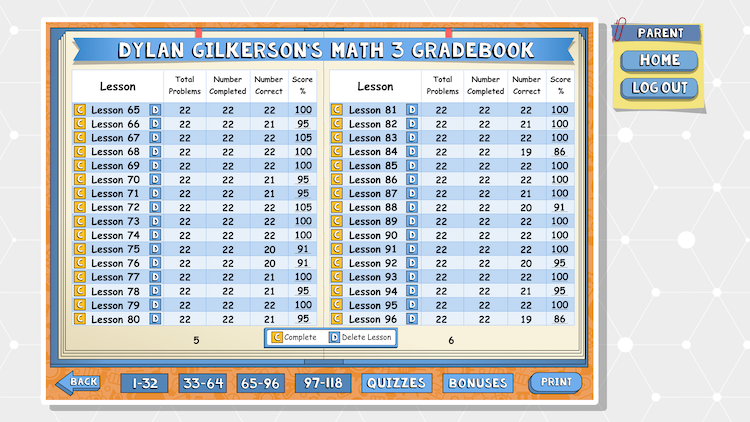
I periodically check through this to make sure there aren’t any concepts they’re repeatedly having problems with.
For example, this year the twins struggled with understanding a quarter til’ and a quarter past on a clock. When I saw this was a problem they were repeatedly having, it gave me the opportunity to sit down and spend a little extra time on this concept.
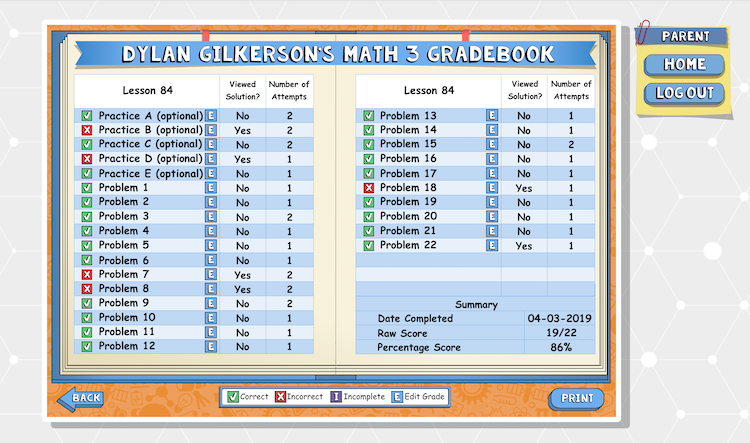
5. Gamification of Learning
Teaching textbooks has done an excellent job of gamifying learning. The animations and sounds and games they incorporate keep kids excited (at least our kids). They give kids immediate positive feedback when they do well.
The twins love the cartoon characters and backgrounds they set — however, they can spend an inordinate amount of time playing with them and switching things around if I don’t keep an eye on them!
6. Flexible, online program (no discs to ruin).
When my twins were 2 they got into some of our school CDs and DVDs.
Not. Cool.
Do you know how much money was lost in curriculum?
I love that the new 3.0 Teaching Textbooks is completely online, so I don’t have to worry about ruined discs. Not to mention, our laptops don’t have disc drives anymore! The program will even work on tablets and phones—though our boys much prefer the larger screen of a laptop.
They’ve created this program with maximum flexibility. When you purchase the course you set your start date and you’ll have a full year to complete your course. But what if life happens? You know, what if you’re going on an extended vacation? Or maybe there was a family emergency, and it completely screwed up all of your homeschool plans? No worries, you can pause your subscription for up to 3 months (that doesn’t even count towards your 12 month subscription).
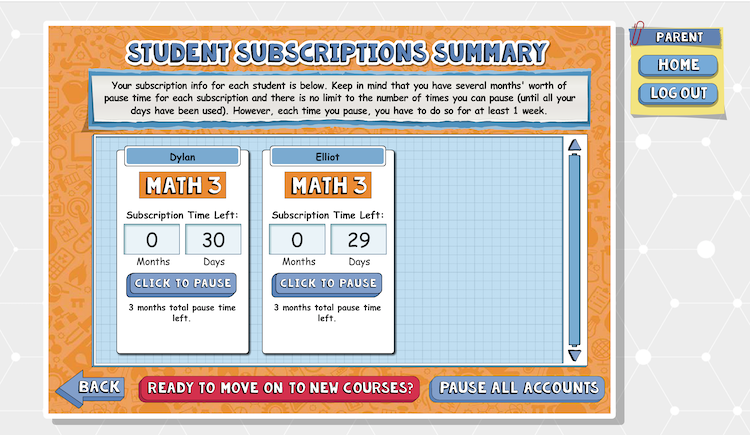
But will my kids be behind on math?
One of the big critiques I’ve heard of Teaching Textbooks is that other math curricula covers more advanced topics at correlating grade levels. But, really…who cares about the grade level? Isn’t that one of the beauties of homeschooling? You’re not constrained to the number on the book. You place your child right at the level they need in the curriculum that works best for them.
Ready to get started?
Convinced? Here’s what to do…
- Have your student(s) take the placement test.
- Begin the free trial (no credit card necessary ) at the level your students placed in. This will give you an opportunity to be sure they’re on the correct level and make sure the curriculum’s a good fit for your kiddos.
- If you loved your free trial, you can upgrade and it will save (or delete) your students progress from the free trial.
If you have 4-8 kids using Teaching Textbooks, you’ll want to take advantage of the Large Family Discount Plan! Less than $200 and you can have math done for your family.
The fact that Teaching Textbooks has promoted independence in math for the twins and freed me up to work with other kids, care for the baby, and keep the house running, all the while being a comprehensive math program that the twins enjoy have been the best perks for using Teaching Textbooks!

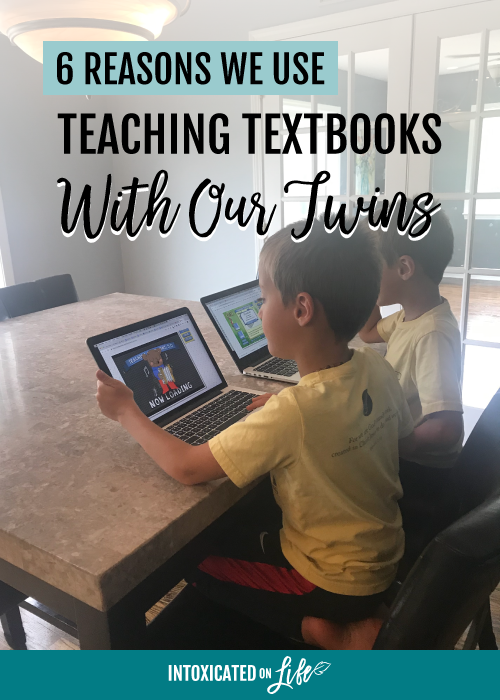
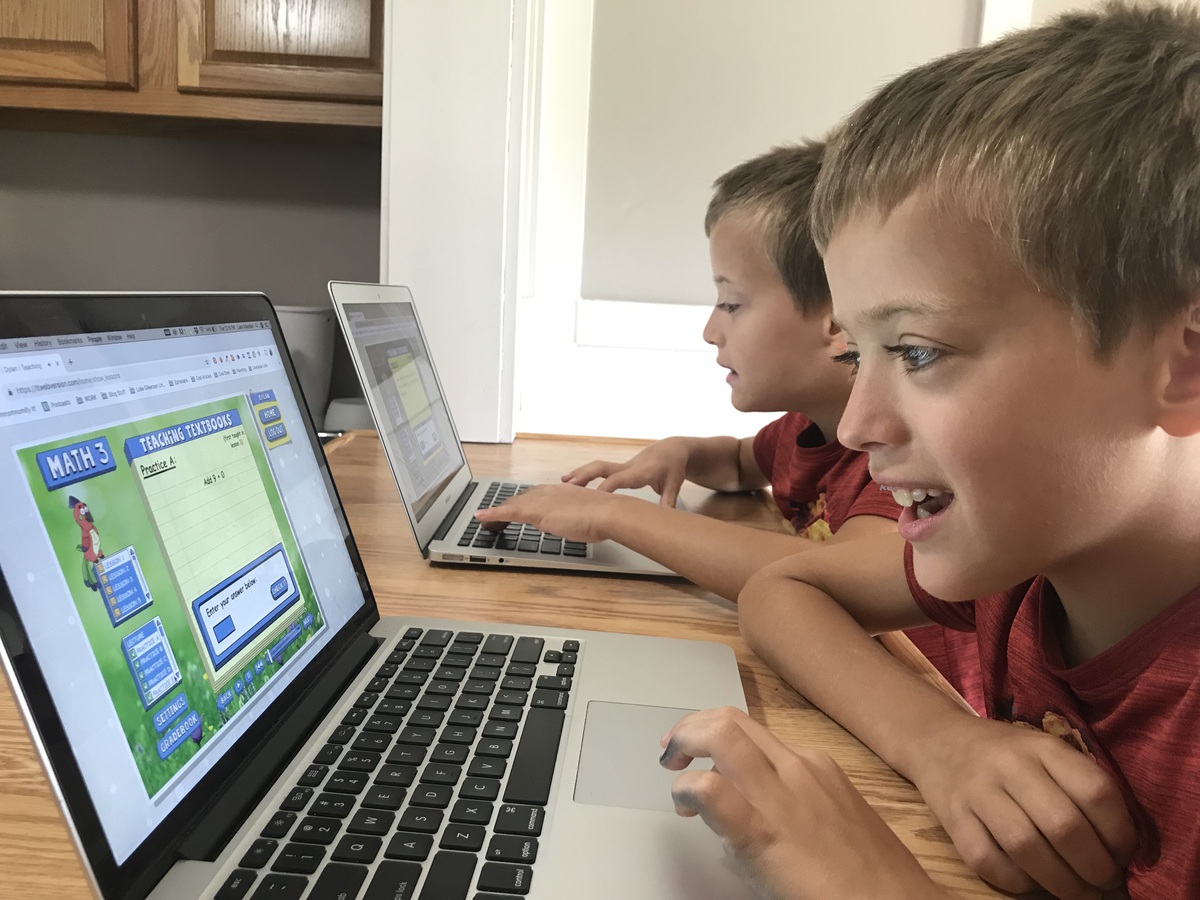
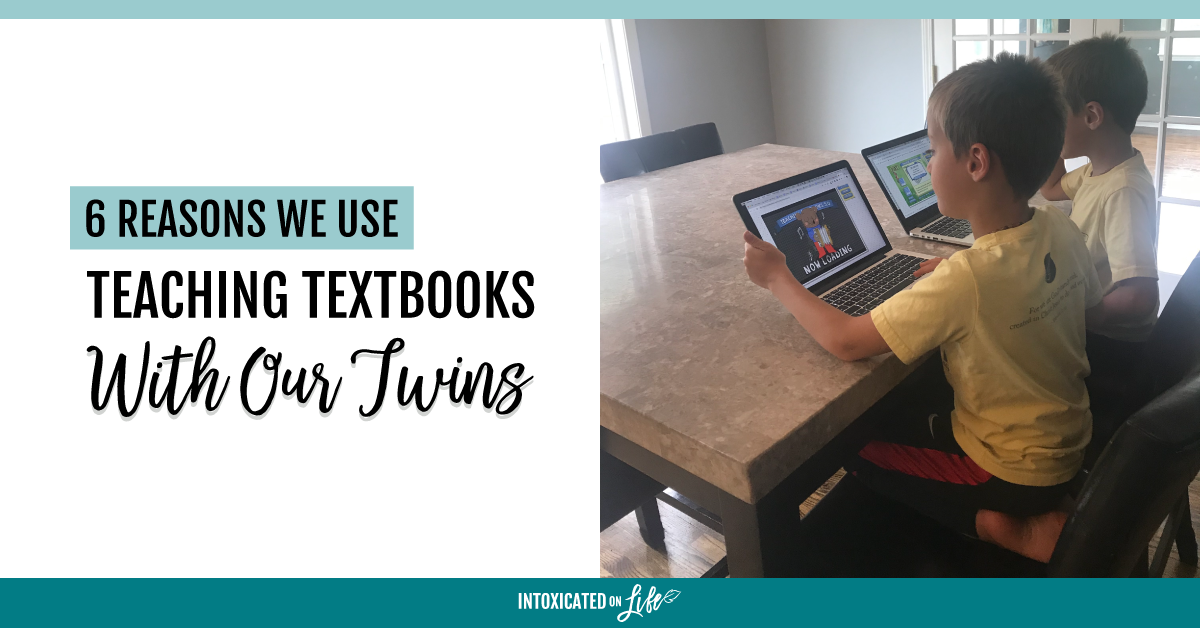
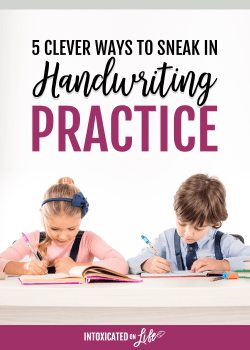



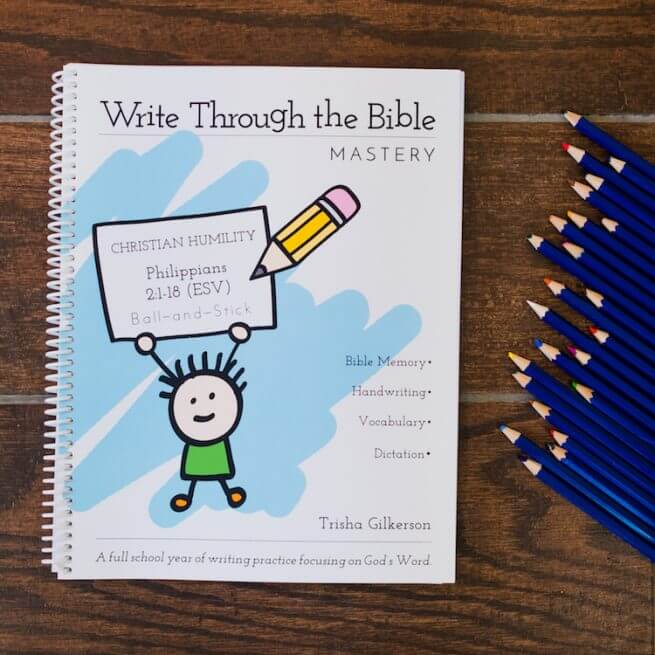
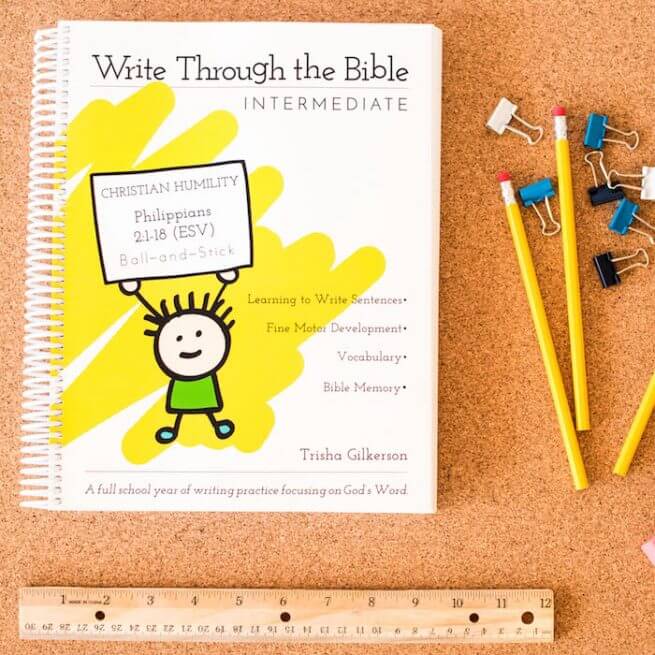
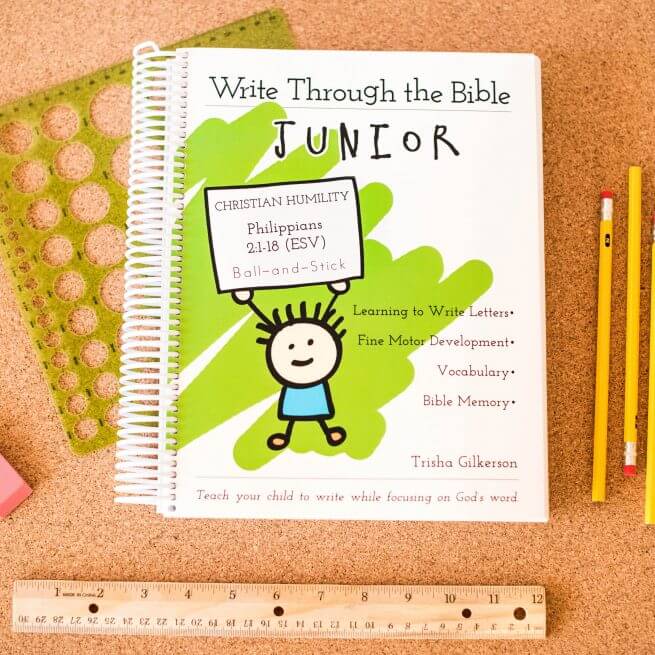
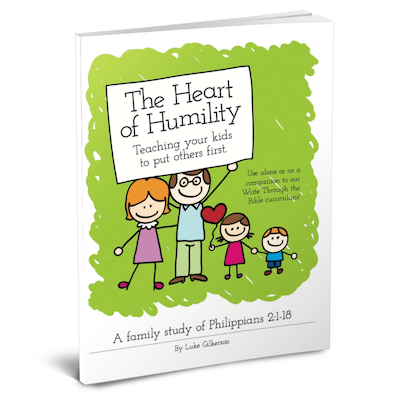

I just received an e-mail from Teaching Textbooks saying I had won this giveaway, so I stopped by to give you a huge THANK YOU for hosting this giveaway and for giving my daughter the opportunity to try TT. I’ve been considering this programs for years, and am so excited for her to give this a try! Thank you!!!! 😀 Caroline K.
Congratulations Caroline! So glad you have the opportunity to try out Teaching Textbooks. We hope you enjoy it 🙂